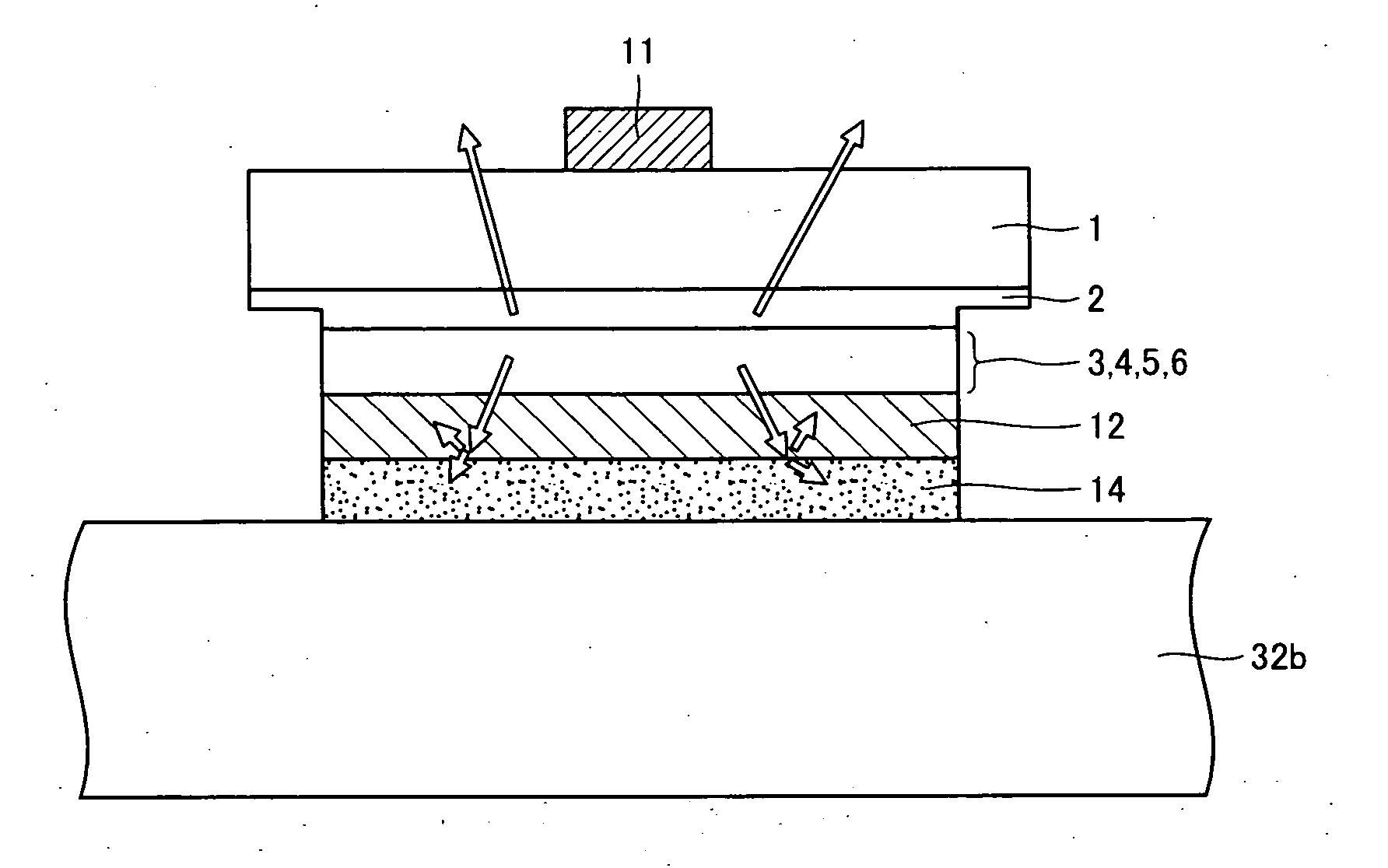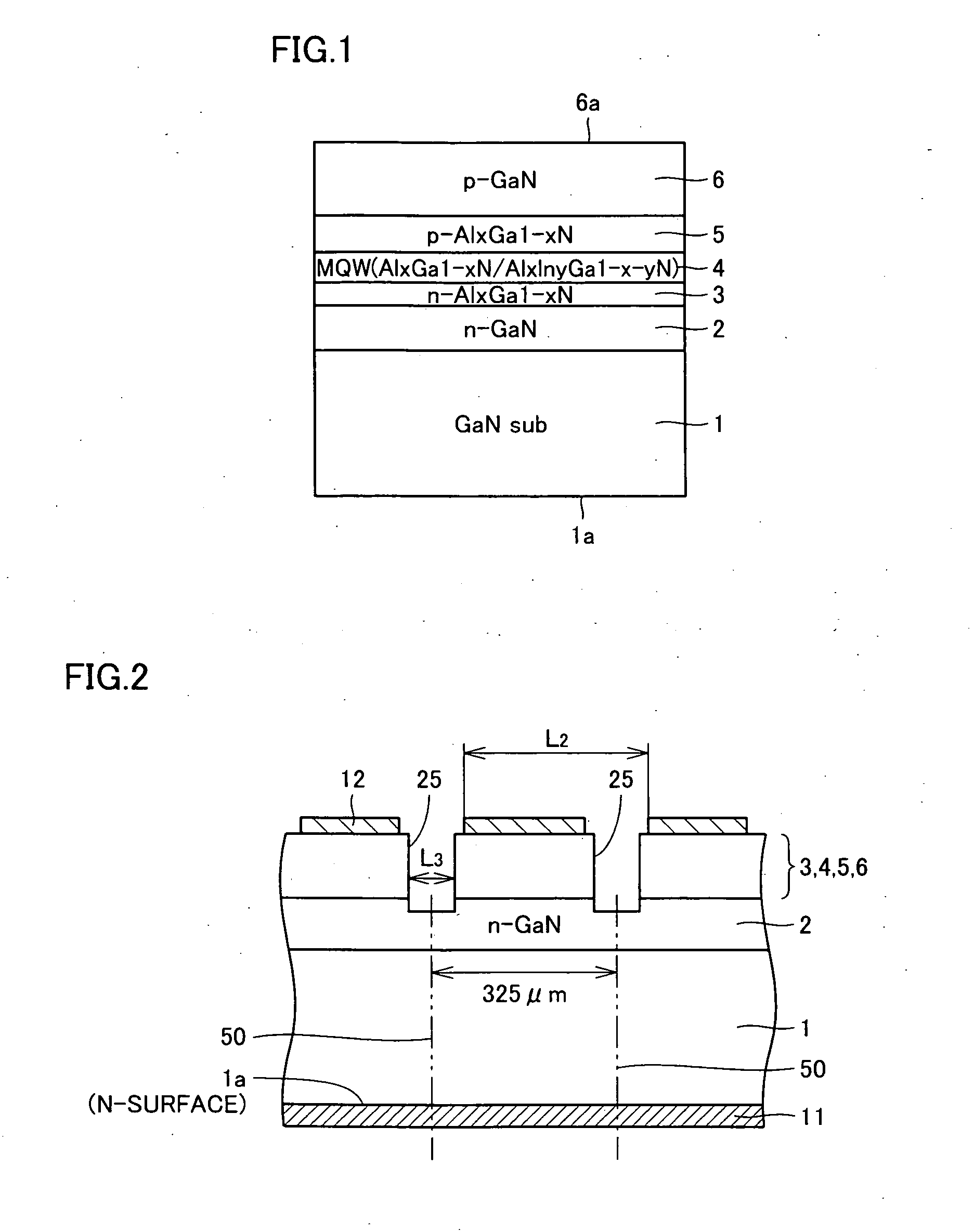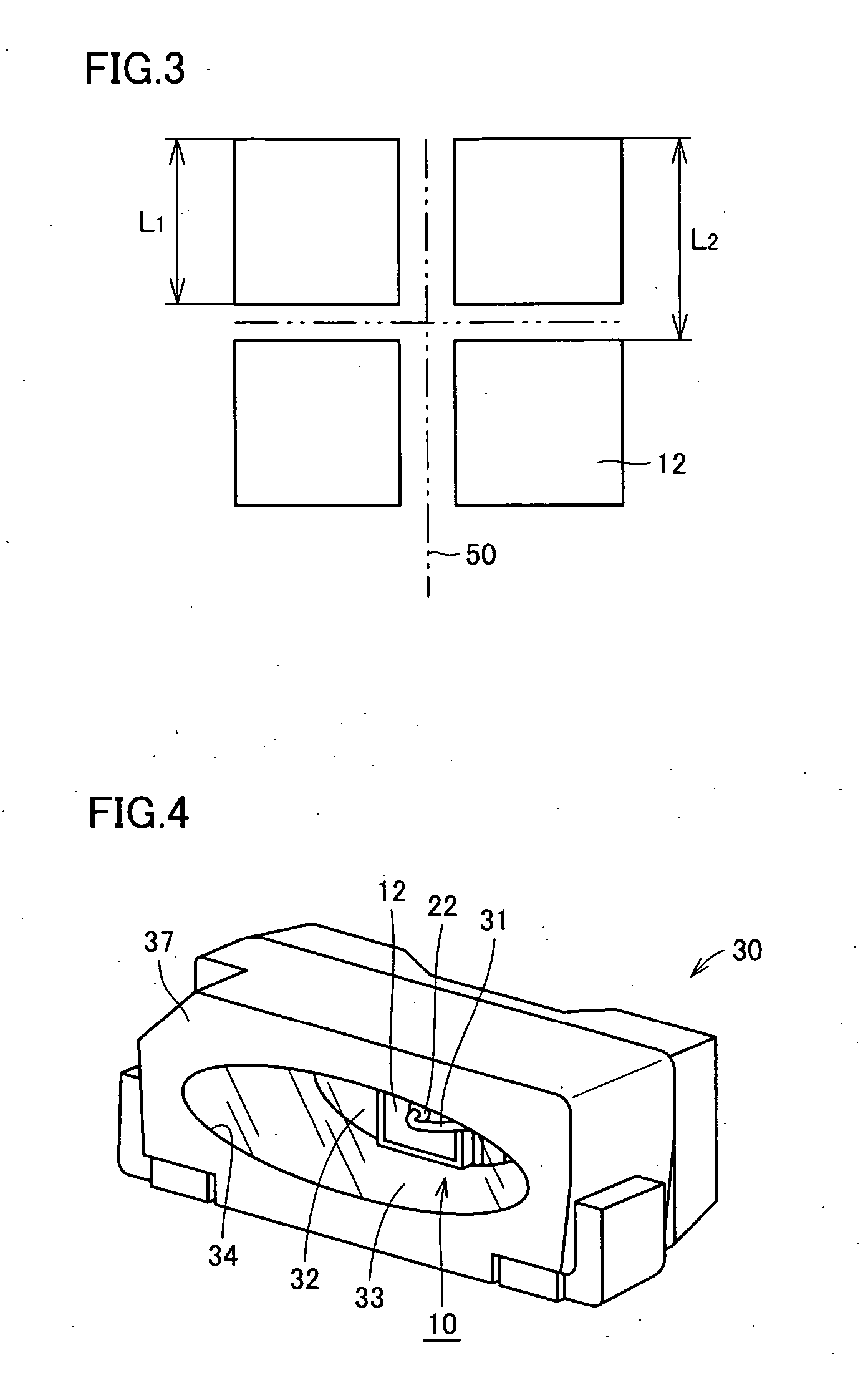Light emitting device
a technology of light-emitting devices and light-emitting components, which is applied in the direction of semiconductor devices, basic electric elements, electrical equipment, etc., can solve the problems of increasing the manufacturing cost, limiting the light output, and heat generation, and achieves simple configuration, high light emission efficiency, and easy fabrication
- Summary
- Abstract
- Description
- Claims
- Application Information
AI Technical Summary
Benefits of technology
Problems solved by technology
Method used
Image
Examples
first embodiment
[0092] In the first embodiment, side-view type LEDs were fabricated using light emitting devices p-top (n-down) mounted on GaN substrates and including an n-electrode formed on the back side of the GaN substrate according to the present embodiment. Further, side-view type LEDs were fabricated using conventional light emitting devices. Then, comparison was made therebetween in terms of the size, light output and luminance.
(Invention Sample A)
[0093] Referring to FIG. 1, there is formed a laminate construction of an n-type GaN layer 2 / an n-type AlxGa1−xN layer 3 / a multi quantum well layer (active layer) 4 consisting of (AlxGa1−xN / AlxInyGa1−x−yN)m / an p-type AlxGa1−1N layer 5 / an p-type GaN layer 6 which have been formed on the surface (first main surface) of a GaN substrate 1 by epitaxial film formation in order from the bottom side. The multi quantum well layer may be formed from (GaxN / InxGa1−xN)m. The number of laminated sets is usually 3, but may be more. The light emitting surface...
second embodiment
[0133] The second embodiment of the present invention was characterized in that an invention sample C, an invention sample D and a comparison sample E were p-down-mounted and the back surface of the n-type layers or the n-type semiconductor substrate was used as a light emitting surface. Invention sample D had a dislocation density of 1E9 / cm2, which was out of the range of dislocation density of light emitting devices according to the present invention employing a nitride semiconductor substrate having a reduced dislocation density. However, invention sample D was included in other types of light emitting devices according to the present invention. In the present embodiment, a sapphire substrate was employed to form comparison sample E and an attempt was made to provide an n-electrode and a p-electrode on the laminated-layers side of the sapphire substrate and down-mount these two electrode. However, an n-electrode having the same size as that of invention samples C, D could not be ...
third embodiment
[0153] In the third embodiment, performance such as the light output was examined for an invention sample F which was a light emitting device provided by applying a non-mirror-surface treatment to the aforementioned invention sample C and for a light emitting device provided with a reflective layer between the light emitting layer and the mounting portion (lead frame, etc.).
(Invention Sample F)
[0154] Referring to FIG. 20, a non-mirror-surface treatment has been applied to the back surface of the GaN substrate forming a light emitting surface and the side surfaces of the GaN surface and the side surfaces of the laminated-layer construction. Namely, the N-surface of the GaN substrate and the end surfaces of the device were made to be non-mirror surfaces. For comparison, FIG. 21 illustrates an image of light being emitted from light emitting device 10 having mirror surfaces.
[0155] As the method for forming non-mirror surfaces, there are methods using dry etching such as RIE or wet ...
PUM
 Login to View More
Login to View More Abstract
Description
Claims
Application Information
 Login to View More
Login to View More - R&D
- Intellectual Property
- Life Sciences
- Materials
- Tech Scout
- Unparalleled Data Quality
- Higher Quality Content
- 60% Fewer Hallucinations
Browse by: Latest US Patents, China's latest patents, Technical Efficacy Thesaurus, Application Domain, Technology Topic, Popular Technical Reports.
© 2025 PatSnap. All rights reserved.Legal|Privacy policy|Modern Slavery Act Transparency Statement|Sitemap|About US| Contact US: help@patsnap.com



